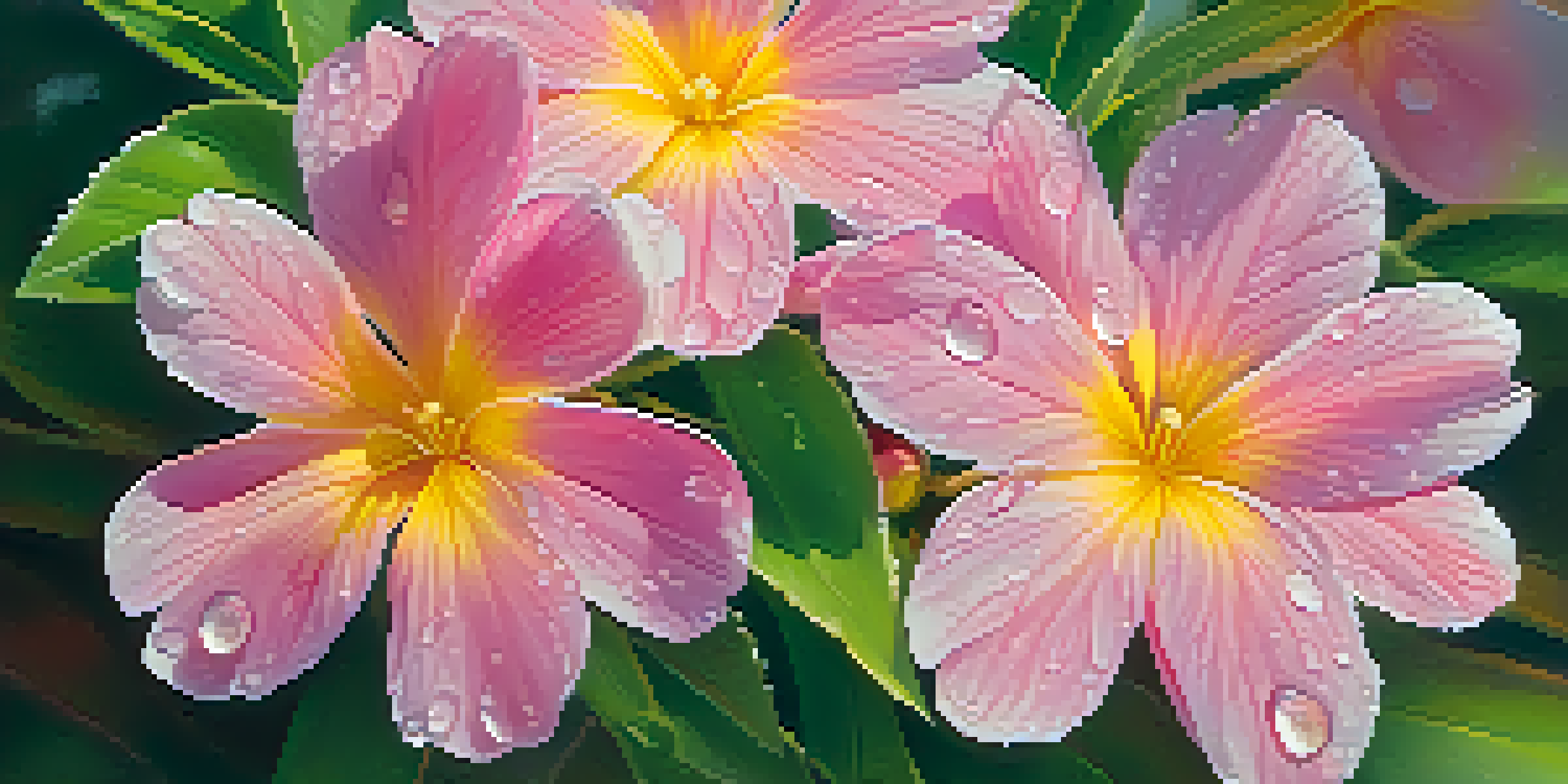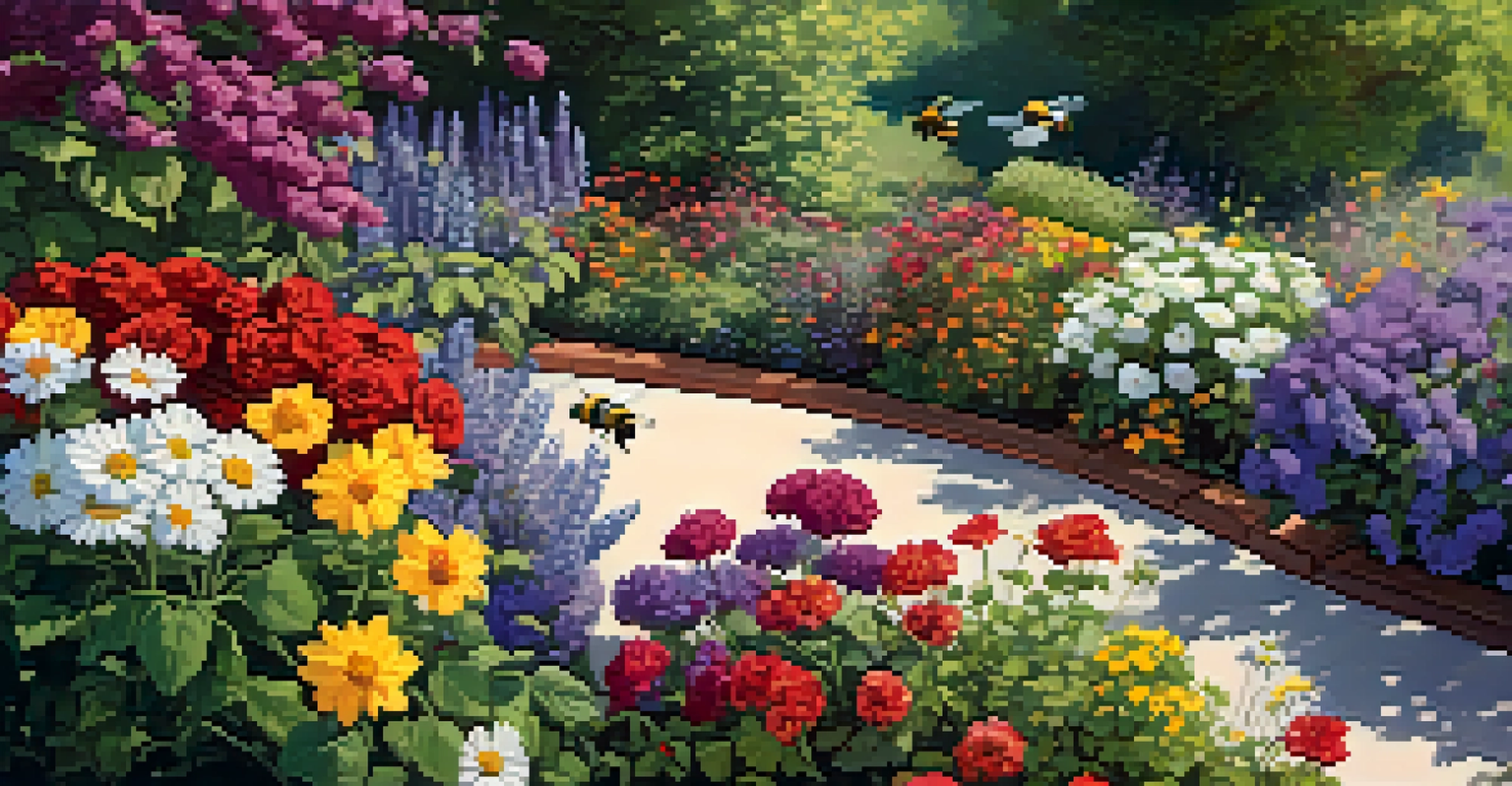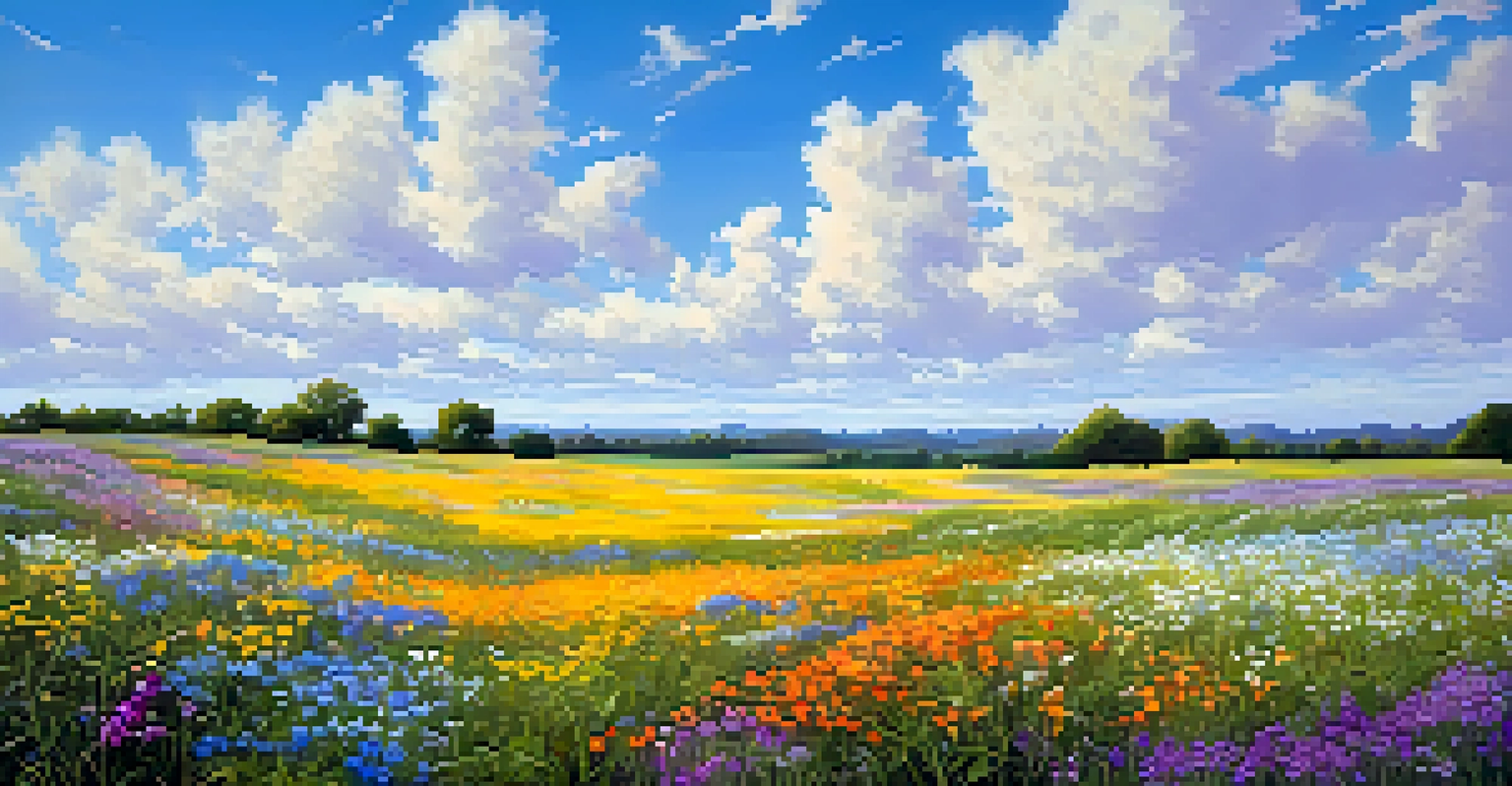The Fascinating Life Cycle of Flowering Plants Explained

Understanding the Basics of Flowering Plants
Flowering plants, or angiosperms, are unique because they produce flowers and seeds. These plants can be found in many environments, showcasing their adaptability. They play a vital role in our ecosystems, providing oxygen, food, and habitat. Understanding their life cycle helps us appreciate their importance in nature.
The creation of a thousand forests is in one acorn.
At the core of flowering plants is their ability to reproduce through seeds, which are formed after pollination. This process involves the transfer of pollen from the male part of the flower to the female part, leading to fertilization. By learning about these processes, we can better understand how plants sustain themselves and their environments.
From towering trees to delicate wildflowers, flowering plants exhibit a wide range of forms and functions. This diversity allows them to thrive in different conditions and climates. Additionally, their ability to attract pollinators like bees and butterflies enhances their reproductive success, making them essential to the health of our planet.
The Seed Stage: Nature's Starting Point
The life cycle of a flowering plant begins with the seed, which is a tiny package of potential. Seeds can lie dormant for long periods until conditions are just right—adequate moisture, warmth, and light. This stage is crucial because it determines the plant's future growth and health, much like how our childhood shapes who we become.

Once the ideal conditions are met, the seed sprouts in a process called germination. The seed absorbs water, swells, and breaks open, allowing the tiny root to emerge first, followed by the shoot that will develop into the stem and leaves. This is a delicate moment; if conditions are unfavorable, the seed may not survive.
Life Cycle of Flowering Plants
The life cycle of flowering plants, from seed to bloom, highlights the intricate processes essential for their survival and reproduction.
Essentially, the seed stage is about survival and preparation. It's a phase where energy is conserved and potential is built, setting the stage for the exciting journey ahead. Just like us, seeds need the right environment to thrive and fulfill their purpose.
Germination: When Seeds Come to Life
Germination is the magical moment when a seed transforms into a plant. During this phase, the seed takes in water and starts to grow, using stored energy. This process can vary in duration depending on the species and environmental conditions, making it a fascinating aspect of plant biology.
Nature does not hurry, yet everything is accomplished.
As the seed germinates, it develops roots that anchor it into the soil, absorbing nutrients and water, which are vital for its growth. The shoot then pushes through the soil, striving for sunlight. This upward growth is analogous to how we reach for our goals—pushing through obstacles to find our place in the world.
Understanding germination helps us appreciate the resilience of plants. It's a reminder of the potential that lies dormant within us all, waiting for the right conditions to flourish. Just as plants need care and nurturing, so do we in our own growth journeys.
Seedling Stage: The Early Days of Growth
Once germination is complete, the plant enters the seedling stage, where it begins to grow leaves and stems. This is a crucial phase for establishing the plant's overall health and stability. Seedlings are delicate and require proper light, water, and nutrients to develop strong foundations.
During this time, the plant focuses on photosynthesis—the process of converting sunlight into energy. The leaves capture sunlight, which fuels growth and helps the plant thrive. It’s akin to how we gather experiences and knowledge during our formative years, shaping our future selves.
Importance of Pollination
Pollination is a crucial step in plant reproduction, involving the transfer of pollen by various agents, including bees, which ensures the continuation of plant species.
The seedling stage is where plants learn to adapt to their environments. They may grow taller to reach more sunlight or spread their roots wider to access water. This adaptability is key to survival, highlighting the importance of resilience in both nature and our lives.
Mature Plant: The Blooming Phase
As the plant matures, it develops into a fully grown flowering plant, often characterized by vibrant blooms. This is the phase where the plant showcases its beauty and prepares for reproduction. Just like us, mature plants are at their peak, ready to share their gifts with the world.
During this stage, flowering plants begin the process of pollination, attracting pollinators with their colorful flowers and enticing scents. This interaction is vital for the production of seeds, ensuring the continuation of the plant's lineage. The relationship between flowering plants and pollinators is a beautiful example of nature's interconnectedness.
Mature plants also play a crucial role in their ecosystems, providing food and shelter for various species. They help maintain the balance of nature, just as we contribute to our communities. Understanding this phase highlights the importance of preserving flowering plants and their habitats.
Pollination: Nature's Reproductive Dance
Pollination is a fascinating aspect of a flowering plant's life cycle, involving the transfer of pollen from the male anther to the female stigma. This process can occur through various agents, including wind, water, and animals, particularly insects like bees. Each method of pollination plays a unique role in the reproductive success of plants.
The relationship between flowering plants and their pollinators is often symbiotic. For example, bees collect nectar for food while inadvertently transferring pollen, facilitating fertilization. This mutual reliance showcases the beauty of nature's design and the importance of biodiversity in our ecosystems.
Adaptation and Resilience
Flowering plants demonstrate remarkable adaptability throughout their life stages, emphasizing the importance of resilience in both nature and our personal growth journeys.
Understanding pollination helps us appreciate the complexity of plant reproduction. It highlights how interconnected we all are within the web of life, reminding us that our actions can have significant impacts on these natural processes.
Seed Development and Dispersal: The Next Generation
After successful pollination and fertilization, seeds begin to develop within the ovary of the flower. This process can take time, as the plant nourishes the developing seeds before they are ready to be dispersed. The formation of seeds is essential for the continuation of the plant’s life cycle.
Once the seeds are mature, they need to be dispersed to ensure that the next generation can grow. Plants have developed various methods for seed dispersal, including wind, water, and animals. For instance, some seeds are carried away by the wind, while others cling to animal fur or are eaten and later excreted, allowing them to grow in new locations.

Seed dispersal is crucial for the survival of flowering plants, as it helps reduce competition among offspring and increases the chances of finding suitable environments. This stage emphasizes the importance of adaptation and exploration, encouraging new growth and the continuation of life.
Conclusion: The Continuous Cycle of Life
The life cycle of flowering plants is a remarkable journey that showcases nature's intricate processes. From seed to bloom, each stage plays a critical role in the survival and reproduction of plants. Understanding this cycle enhances our appreciation for the natural world around us.
Just like the life cycle of plants, our lives are filled with growth and transformation. Each stage brings its own challenges and opportunities, reminding us that change is a natural part of life. Embracing this cycle fosters resilience, adaptability, and a deeper connection to nature.
In conclusion, the fascinating life cycle of flowering plants not only sustains our ecosystems but also offers valuable lessons for our own journeys. By nurturing and protecting these plants, we ensure the health of our planet and ourselves, making every stage of life worth celebrating.